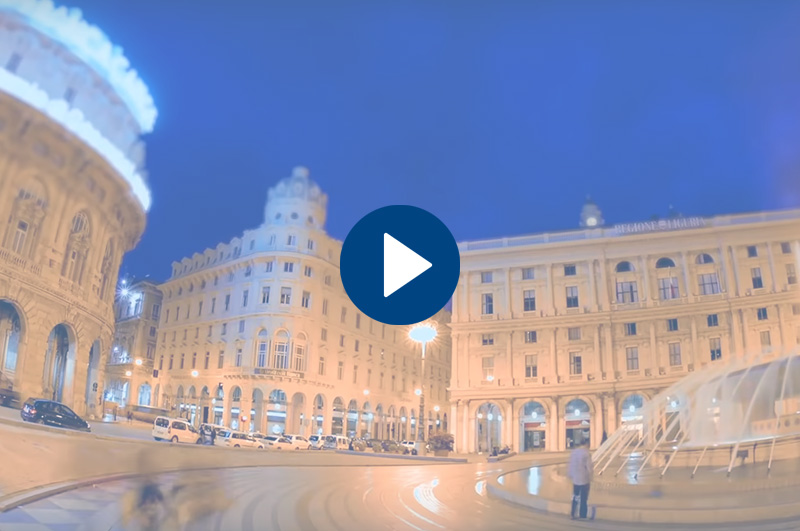ITALY IN 2 WEEKS – PRIVATE TOURS
Milan, Florence, Rome and Venice
HIGHLIGHTS
- Milan, the 2,000-years-old trendy capital of Northern Italy
- Parma, the art of food
- Cinque Terre, the stunning 5 villages perched on the rocks
- Pisa, how can it stand?
- Florence, an open-air museum
- Siena and San Gimignano, power in the Middle Ages
- Val d'Orcia, where Man and Nature blend in harmony
- Rome, walking in the shade of history
- Vatican City, Popes and Power
- Assisi, the extraordinary land of Francis
- Umbria, the green heart of Italy
- Bologna, enjoy life in the city of porticoes
- Venice, when merchants ruled the Mediterranean
WHAT'S INCLUDED:
Accommodations in Double Room with Continental Breakfast (*):
- Day 1: 3* to 5* Hotel in Parma area
- Days 2 & 3: 3* to 5* Hotel in Cinque Terre area
- Days 4 & 5: 3* to 5* Hotel in Florence city centre
- Days 6 & 7: 3* to 5* Country House in Val d’Orcia area
- Days 8 & 9: 3* to 5* Hotel in Assisi area
- Days 10 & 11: 3* to 5* Hotel in Rome city centre
- Day 12: 3* to 5* Hotel in Bologna city centre
- Days 13 & 14: 3* to 5* Hotel in Venice city centre
(*) The Hotel list is available upon request
Transfers (**):
- Day 1: Transfer to your accommodation in Parma area
- Day 4: Transfer to your accommodation in Florence – Stopover in Pisa
- Day 8: Transfer to your accommodation in Assisi area
- Day 10: Transfer to your accommodation in Rome
- Day 12: Transfer to your accommodation in Bologna
- Day 13: Transfer to Venice Pier + Transfer by private water cab to your accommodation in Venice
(**)All transfers by private car (2 pax)/ minivan (3 to 6 pax)/ minibus (7 to 10 pax)
Private Guided Visits / Tours (***) / Activities:
- Day 1: 3-hour private walking tour of Milan city centre with an Authorised Tourist Guide
- Day 2: Full-day excursion of Parma area with an Authorised Tourist Guide- Visits to a Parmesan Cheese factory, a Parma ham factory
- Day 3: Full-day excursion by Shuttle Train in Cinque Terre area
- Day 5: 3-hour private walking tour of Florence city centre with an Authorised Tourist Guide
- Day 6: Full-day excursion to Siena and San Gimignano – Drop off at your accommodation in Val d’Orcia area
- Day 7: Full-day excursion by private minivan to Val d’Orcia area - 3-hour private walking tour of Montepulciano city centre with a Sommelier Guide, with tastings of Vino Nobile, Pecorino cheese and truffle - Visit of a Supertuscan Brunello di Montalcino wine cellar with tastings
- Day 8: 2-hour private walking tour of Assisi with an Authorised Tourist Guide
- Day 9: Full-day excursion to Spoleto and Deruta
- Day 10: 3-hour private walking tour of Imperial Rome with an Authorised Tourist Guide
- Day 11: 3-hour private walking tour of the Vatican City with an Authorised Tourist Guide
- Day 12: 3-hour private walking tour of Bologna city centre with an Authorised Tourist Guide
- Day 13: 3-hour private walking tour of Venice city centre with an Authorised Tourist Guide
- Day 14: Full-day excursion by private water taxi to Murano and Burano with an Authorised Tourist Guide - Half-hour Gondola Ride
(***)All tours by private car (2 pax)/ minivan (3 to 6 pax)/ minibus (7 to 10 pax)
Admission Tickets to:
- Duomo Cathedral in Milan
- Leaning Tower in Pisa
- Colosseum and Imperial Fora Archeological Area in Rome
- Vatican Museums with the Sistine Chapel in Rome
- Saint Mark’s Basilica in Venice
Full emergency assistance 24 hours/day by our Back Office
List of recommended restaurants along the itinerary
All taxes
Options:
- Pick up at Milan Airport /Railway Station on the day before the start of the tour
- Accommodation in Milan on the night before the start of the tour
- Cooking Class in a Parmesan Villa
- Galleria dell’Accademia (Michelangelo’s David)
- Visit of a Ceramics Artisan laboratory
- Food Tour in Rome city centre
- Admission to Palazzo Ducale in Venice
- Drop off at Venice Airport /Railway Station at the end of the tour
- Other activities upon request
Day 1 - MILAN
Benvenuti in Italia, welcome to Milan.
Milan is, first of all, the Fashion Capital of Italy! The showrooms of all Italian manufacturers are located in the city, and here buyers from worldwide distribution find the one and only “Italian Style”! But Milan is not only fashion, it is also and above all art, beauty and culture! Piazza del Duomo is the geographical and historical centre of the city. Palaces surround it with arcades; in the middle, you can see the Duomo, one of Europe’s biggest Gothic cathedrals, whose construction started in the 14th and ended in the 20th century. And on the Gran Guglia, the cathedral’s highest spire, the Madonnina, a symbol of Milan, stands. On the left of the square, the 19th-century Galleria Vittorio Emanuele II links the grand Piazza del Duomo with Piazza della Scala, featuring mosaics and a wrought iron and glass roof.
Then stroll down the streets of “Quadrilatero D’Oro”, the heart of the fashion industry, admiring the shop windows of Prada, Armani, Versace, Ferragamo, Dolce & Gabbana and Valentino. The multi-concept store by Giorgio Armani, Spazio Armani, in the elegant Via Manzoni, extends for 6,000 square meters and offers fashion showrooms, furniture, flowers and hi-tech Sony equipment. After shopping, enjoy an aperitif or a coffee at the Emporio Armani Cafè upstairs or book a table at the Japanese restaurant Nobu. Or taste a gorgeous Cappuccino at Pasticceria Cova, as locals often do in via Montenapoleone, “Montenapo” for the Milanese!
At dinner, what about a tasty yellow “Risotto alla Milanese”? According to an ancient tradition, the Duomo is where Risotto alla Milanese was “born”, invented by a boy who worked for the stained glass artist Valerio di Fiandra, nicknamed “Zafferano” for its habit of adding spices to his colours. One day, he also put some saffron in the rice, and the result was a great success!

Day 2 – PARMA
Your next destination is called “The Capital of Food”, and this is a well-deserved denomination, as Parma is known worldwide for its delicious food products.
Parma is known for its delicious food products. First, you will visit a Parmigiano Reggiano factory, where you will see cheese masters at work: an extraordinary way to get into the area's production culture and discover how a true gastronomic gem is made (more about Parmesan cheese in our BLOG).
Later on, visit a Parma ham factory, where you will learn the secrets of the most delicious ham, Prosciutto di Parma (to know more about raw ham in Italy, read the article in our the BLOG)
And finally, you may savour authentic Italian cuisine in a fun-filled cooking class led by a local “rezdora” (a female cook in the Parmesan language). Immerse yourself into the tradition of fresh Italian pasta and study the secrets of preparing pasta dough from scratch, using just flour and eggs. You will make your own “Tortelli d'erbetta” (Parma's most traditional pasta with a filling of ricotta cheese and chards) and delicious tagliatelle with tomato sauce – all local ingredients! Once your fantastic meal is ready, you will enjoy what you prepared, matched with a glass of local Lambrusco wine. A very tasty experience at the end of an unforgettable day!
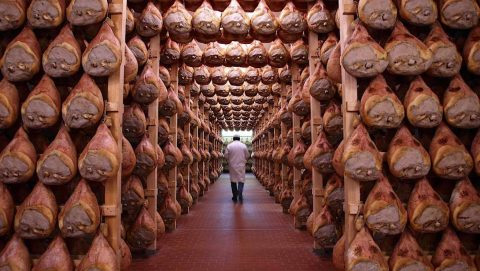
Day 3 – CINQUE TERRE
Welcome to Cinque Terre, the beautiful villages on the Ligurian Sea included in the UNESCO World Heritage Site list. You will be stunned by the sea views and the contrasts between the sea and the cliffside. From Monterosso, you may reach the other fishing villages by train or on foot: Corniglia, Vernazza, Manarola and Riomaggiore. The vineyards, typical of this area, contribute to creating a unique landscape with dry-laid stone walls, winding paths, enchanting beaches between cliffs and clear waters!
The area is divided into five seaside and agricultural villages enriched with colours, simplicity and charm. The first stop in Cinque Terre is Monterosso, a well-known tourist destination embellished with elegant villas and a large beach. The old town centre, whose narrow alleys clamber up the hill, is home to the Gothic parish church of San Giovanni Battista and the 17th-century church of San Francesco, which is connected to the convent of the Capuchins.
Next is Vernazza and its charming marina, surrounded by the medieval little town and its characteristic little piazza, two Genoese lookout towers and the enchanting Gothic two-storey church dedicated to Santa Margherita d’Antiochia.
Just a short distance away is Corniglia, a village perched on a promontory ridge and connected to the beach by a stairway with 365 steps. The view of the village and the surrounding vineyards is just marvellous.
Then, Manarola, with its enormous black cliff overlooking the sea and its colourful houses, apparently coming out of the rock.
The last town in Cinque Terre, and the heart of the homonymous park, is Riomaggiore, a picturesque fishing village with tall, narrow, pastel-coloured houses and alternating light and darkness coming from the tight alleyways.
Do you like anchovies? They are a local speciality of Monterosso! Have you ever tried “Linguine al Pesto”, a sauce made from basil leaves, garlic, salt, olive oil, pine nuts and pecorino cheese? And what about Ligurian wines? Sciachetrà will seduce you!!
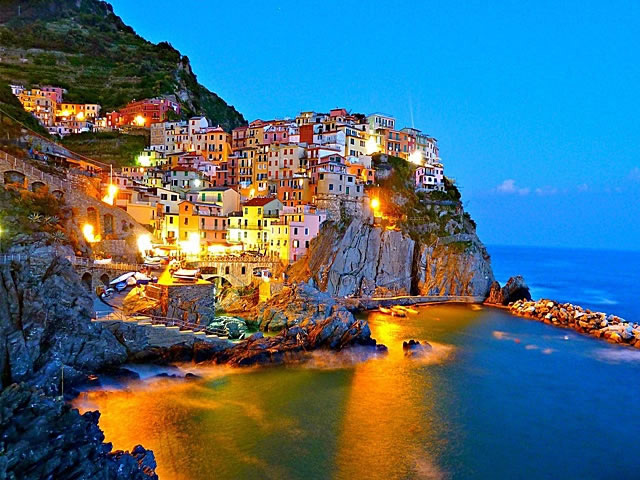
Day 4 – PISA
Pisa is famous worldwide for its “Torre Pendente” (Leaning Tower), but its wonderful square, Piazza dei Miracoli, set over an ample greenfield, hosts three other whiter-than-white masterpieces of exquisite Medieval art: the Cathedral, the Baptristy and the “Camposanto” (Graveyard). They are so unique that their creation originated a new style, "Pisan Romanesque".
This area was chosen to construct the Duomo of Santa Maria Assunta strictly for its centrality; founded in 1064, it was intended to celebrate the grandeur of Pisa during the Marine Republic’s epoch of power. "The temple of marble white as the snow"; that’s how the structure is described on the gravestone of its architect, Buscheto di Giovanni Giudice. Consisting of five naves with its transept divided into three naves, it is surmounted by a splendid dome encircled by a loggia. The Duomo’s façade and exterior lateral sections feature elaborate decoration in marble (which can also be seen on its interior), mosaics, and bronze.
In front of the Cathedral stands the Baptistry, also in a particular version of the Romanesque style. Initiated in 1152 by Diotisalvi, the Baptistry was finally completed in the 14th century; Gothic elements were added then. Of cylindrical form and circled by arcades of columns, this structure in white marble even boasts impressive acoustics.
The Camposanto closes the northern end of the complex's piazza. This monumental cemetery, begun in 1278, is bordered by a marble fence and houses a cloister at its centre. Unfortunately, most frescoes that once coloured its walls were destroyed in a fire in 1944 during the battle for Pisa.
Ultimately, the true symbol of Pisa is the Campanile, the Leaning Tower, which completes the image of this city. Because of land sinkage beneath it, the Tower stands at a significant incline. Its construction started in 1173, but the Tower was not completed until the second half of the 1300s. In cylindrical form, the blind arcades of its lower part mutate into six floors of loggias, repeating motifs from the Duomo. Inside, a spiral staircase of 294 steps leads to the heights of one of the most famous towers in the world, where the lovely belfry and a spectacular view of the surrounding landscape await.

Day 5 – FLORENCE
Welcome to Florence, the land of Giotto and Dante!
Despite its international fame and greatness, Florence is also a small city whose history has been interwoven with that of its passionate citizens for more than one thousand years
In Piazza Duomo, you will be astonished by the Duomo with the incredible Brunelleschi’s dome, a masterpiece of art and architecture whose building techniques are still covered by a veil of mystery. Beside it, Giotto’s Belltower and the Baptistery, one of the oldest buildings in the city, with its famous bronze doors made by no and Ghiberti in the 14th and 15th centuries. In Piazza della Signoria, you will walk in the middle of bronze and marble masterpieces by Giambologna and Cellini inside the marvellous Loggia dei Lanzi, and will admire the imposing Palazzo Vecchio, one of the symbols of Florence and still the seat of government of the city. You may also spare some time to relax, visiting a typical market for shopping, strolling through the city's pedestrian streets, and crossing the oldest bridge in Florence, “Ponte Vecchio” (Old Bridge), rich in jewellery shops.
Your itinerary may include Galleria dell’Accademia, hosting Michelangelo's David, the most famous sculpture in the world. The David was uncovered and shown to the Florentines on September 8, 1504, and with its height of 4 meters, the impeccable physical features and the political significance that the iconography of David had taken over the previous century left the Florentines of the time speechless and has done the same ever since with visitors from all over the world.
Florence is also the main Italian centre for the production of high-quality leather goods. Florentine artisans are so famous that many fashion brands have opened factories in the city or close to it due to their high skill and the continuous inspiration designers take from the town’s masterpieces. The area around Piazza Santa Croce, in particular, hosts numerous leather shops and workshops.
Thanks to the tradition of Tuscan tanneries, there is no better place to find shoes for all tastes than Florence: from the creations, designed and produced by hand by skilled craftsmen, to the extensive collections available in stores, renewed every season. Above all, Ferragamo (also worth seeing the museum), Gucci and Prada for refinement and elegance. If you prefer a simpler style, many shops specialise in handmade shoes and sandals across the river Arno.
At lunch, you may enjoy “Panino con Lampredotto” in a typical Florentine market. At dinner, taste the simple yet unforgettable recipes of the Tuscan tradition, such as "Crostini", "Panzanella", and "Peposo". And remember, Florence is the home of "Fiorentina" steak! In case you are a vegetarian, don’t worry: Tuscan cuisine offers tasty alternatives like “Pappa al Pomodoro” or “Ribollita” (read our BLOG to know more about Tuscan Cuisine).

Day 6 – SIENA AND SAN GIMIGNANO
In Siena, the city of the Palio, you will walk on the famous Piazza del Campo, the concave square where horses run twice a year in a dangerous race that symbolizes the city’s freedom. On the days of the Palio, the whole town goes crazy; read about it in our BLOG. Indeed, you will not forget the colour of frontages and roofs, the renowned colour “Sienna”, a pigment first produced during the Renaissance, that makes the city lovely and warm. And don’t forget to taste the Senese sweets: “cantucci” (biscuits with toasted almonds), “ricciarelli” (soft biscuits with icing sugar), “panforte”(cake with fruit nuts and spices) and “cavallucci” (biscuits with honey, walnut, candied fruits and spices. Travellers who love dessert will be delighted!
In the afternoon, you will stroll with your head upwards along the streets of one of the most beautiful cities in Tuscany, San Gimignano, also known as the "Medieval Manhattan", thanks to its old and impressive 14 towers that dominate the town skyline. Originally the towers were 72, built by patrician families probably to demonstrate their wealth and power. Seven of San Gimignano's towers are around Piazza del Duomo; the tallest one is Torre Grossa, 54 meters high, dating back to 1298.

Day 7 – VAL D'ORCIA
Val d’Orcia is one of the most fascinating places in Italy, included by UNESCO in the list of World Heritage Sites. Its landscape is a part of the agricultural hinterland of Siena, redrawn and developed when it was integrated into the city-state's territory in the 14th and 15th centuries to reflect an idealized model of good governance and create an aesthetically pleasing picture. The landscape’s distinctive aesthetics, flat chalk plains with almost conical hills and fortified settlements on top, inspired many artists. Their images have come to exemplify the beauty of well-managed Renaissance agricultural landscapes.
Your first stop will be in Pienza, “Pio’s town”: here, Pope Pius II decided to build the perfect palazzo for his papal court according to the project of an “Ideal City" drawn up by artists such as Piero della Francesca. From the loggia of the Palace, you will enjoy a breath-taking panorama of the valley. Pienza is also the area of the typical “Pecorino di fossa” cheese, an absolute delight to the palate!
In Montepulciano, our friend Francesca will lead you to discover this beautiful town full of stories, legends and thousand flavours, introducing you to the excellent products of this unique land: olive oil, pecorino cheese and Vino Nobile di Montepulciano.
Then, you will get to Montalcino, one of the prettiest hill towns in Tuscany. Around the village, rows of olive trees, precious grapevines and yellow fields create an enchanting landscape. Here you may visit a Brunello winery to taste the most famous SupertuscanSupertuscan wine, probably the best Italian red!
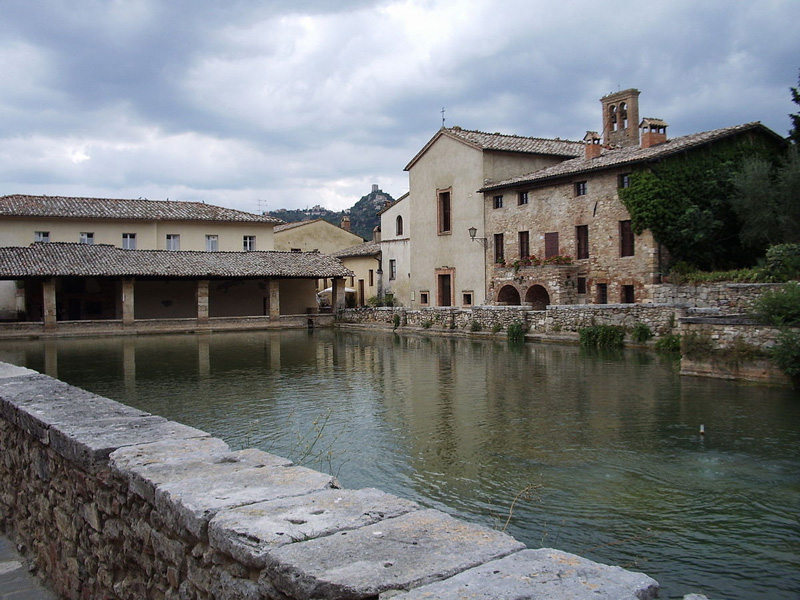
Day 8 – ASSISI
Assisi is the birthplace of Francis, the nobleman who renounced all his possessions to devote his life to helping the needy and became the most acclaimed Saint of the Catholic Church.
The splendid Basilica, one of the emblems of Christianity, located on Mount Subasio and overlooking the entire valley, is dedicated to him. Apart from being a strong appeal to millions of religious believers, the Basilica is a monument of great artistic value. The construction of the Basilica began two years after his death, in 1228, and between the end of the 13th and the beginning of the 14th century, the basilica's walls were frescoed by the best artists of that time: Giotto, Cimabue, Simone Martini and Pietro Lorenzetti. St. Francis' Basilica consists of two churches laid upon each other and a crypt containing the tomb of the Saint. The Lower Basilica presents a simple facade with a double front portal embellished with a rose window and a mosaic. The interior is decorated with frescoes by some of the most important painters from 1200 to 1300, from Cimabue to Giotto, from the Lorenzettis to Simone Martini.
In the Upper Basilica, you will admire the frescoes of the life of St. Francis, painted by Giotto, the stories of the Old and New Testament covering the entire nave, and other beautiful frescoes by Cimabue and Torriti.
Another figure who profoundly influenced these places is Saint Clare, to whom the homonymous Basilica -with a facade made of white and pink stone and divided into three sections by horizontal cornices - is dedicated. The interior frescoes and the remains of the Saint are visible through a window in the crypt.
Try to enjoy the mystical atmosphere of Assisi:
"Be praised, my Lord, through our sister Mother Earth,
Who feeds us and rules us,
And produces various fruits with coloured flowers and herbs."
(St. Francis, Prayer of the Canticle of the Creatures)

Day 9 – UMBRIA
Umbria is the greenest region of Italy, and its citizens are famous for their hospitality. This morning, our first stop will be Spoleto, a medieval hill town in the Umbria region, famous for its summer music festival, “Festival dei Due Mondi”.
Thick walls and a magnificent gorge surround the city, and fine medieval and Roman monuments sit along the streets. The Duomo is one of Spoleto's most pleasing sights: dating back to the 12th century, the cathedral is set against a backdrop of hills and valleys. The Rocca is high above the town, a Papal fortress used as a prison until the 1980s. A massive bridge, Ponte delle Torri, built in the 14th century, functioned as a bridge and aqueduct; we can walk on it for breath-taking views of the valley and gorge below.
We will have lunch in Spoleto; you can try a typical Spoleto food,“torta al testo” (bread prepared with water, flour, salt, pepper, and olive oil and cooked on a particular marble stone in a wood-burning oven); it is sometimes stuffed with ham, sausage, or simply with herbs prepared in olive oil.
Then, you’ll head for Deruta, famous for its splendid, brightly coloured maiolica. The production of ceramics in Deruta goes back to the 13th century. In those times, small “bottegas” produced objects of everyday use: jugs, bowls, and basins. Maiolica reached its apex in the 16th century, with artists making various motifs, such as mythological figures, battles and religious scenes.
In Deruta, you will visit a maiolica laboratory, discovering all the creative processes of the fascinating craftsmanship of ceramics, from the creation of models to the exit of the artefacts from the oven.
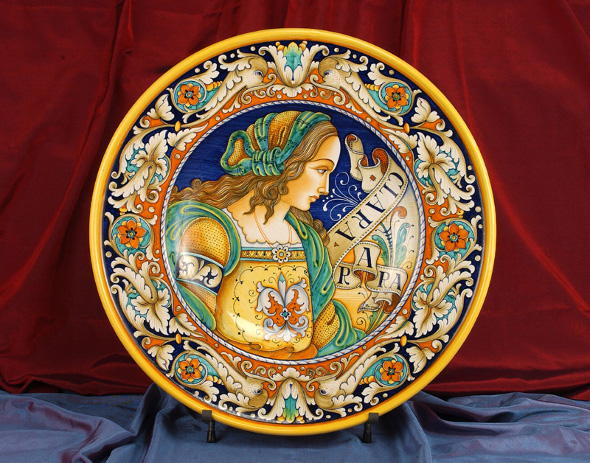
Day 10 – ROME
Here you are in Rome, where ancient history, excellent art and religious icons mix uniquely! Start from the 2,000-year-old Colosseum, the most famous amphitheatre in the world, and the Imperial Fora, the administrative and monumental centre of the Roman Empire. On the Palatine Hill, the majestic ruins of the Palaces of Augusto, Tiberius and Domiziano still dominate theCircus Maximus valley, 50-meter-high structures giving a unique view of the city.
Close to the Colosseum, inside the Church of San Pietro in Vincoli, you may see the famous Michelangelo sculpture of “Moses”. Supposedly, Michelangelo, admiring his Moses, enraptured by the so realistic shapes of the imposing statue, was struck by a violent outburst of anger and exclaimed the famous phrase “Perchè non parli?" (Why don't you speak!?)
From Piazza Venezia, you will head inside “Baroque” Rome, starting with the Pantheon, dedicated to worshipping every god (Pan-every Theon-divinity), now the memorial chapel of great Italian people of the past. After that, don’t miss the Church of St. Louis of the French, famous for the cycle of paintings of the great Caravaggio at the end of the 16th century. Then Piazza Navona, the splendid oval area corresponding to the underground Domitianus’ Stadium, with the gorgeous Fountain of the Four Rivers by Lorenzo Bernini in the centre of the Piazza. And finally, Fontana di Trevi, the city’s biggest and most famous fountain, a Rome icon renowned worldwide: here, statues of travertine marble stand over the cliff and the broad basin in an epic representation of the Kingdom of the Oceans.
At the end of the day, sit down at a local "trattoria" or "fiaschetteria", the typical home-style restaurant, to taste authentic Roman cuisine in a popular and cheerful atmosphere (for an overview of Roman cuisine, see our BLOG).
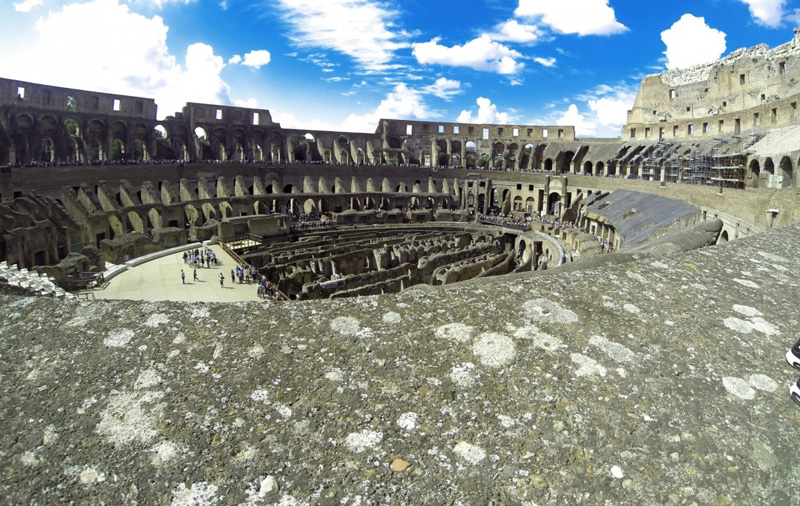
Day 11 – VATICAN CITY
On the other side of River Tevere, Vatican Hill is the home of the tiny state of Vatican City. The immense St. Peter’s Basilica dominates the extraordinary Piazza framed by the magnificent four-column-deep colonnades designed by Gian Lorenzo Bernini. The Basilica is an extraordinary casket for some of the world's most beautiful works of art, such as Michelangelo’s “La Pietà” and Bernini’s “Baldacchino”, along with works of the most important artists of the Renaissance, from Raphael to Canova.
Inside the Vatican Museums, you will be astonished by the exquisite and unique Sistine Chapel, the “Sancta Sanctorum” (“Holy among the Holiest” in Latin) of the Roman Catholic Church, where cardinals gather to elect the new Pope! The Sistine Chapel takes its name from Pope Sixtus IV della Rovere (pontiff from 1471 to 1484), who had the old Cappella Magna restored between 1477 and 1480. The decoration of the walls was executed by a team of painters, Pietro Perugino, Sandro Botticelli, Domenico Ghirlandaio and Cosimo Rosselli, assisted by their respective shops.
Julius II della Rovere (pontiff from 1503 to 1513), the nephew of Sixtus IV, decided to partly alter the decoration, entrusting the work in 1508 to Michelangelo Buonarroti, who painted the Ceiling and, on the upper part of the walls, the lunettes. The nine central panels show the Stories of Genesis, from the Creation to the Fall of Man, to the Flood and the subsequent rebirth of humanity with the family of Noah. Again, towards the end of 1533, Clement VII de' Medici (pontiff from 1523 to 1534) asked Michelangelo to paint the Last Judgement on the altar wall. How could he refuse? And, in fact, he did not, but painted his vision of the Judgement, with a powerful and furious Jesus Christ.

Day 12 – BOLOGNA
Bologna was once a "stone forest", a suggestive city full of “medieval skyscrapers” that offered protection to its inhabitants and facilitated the observation of the surrounding hills and plains. The seat of the most ancient university in the western world, Bologna, in Emilia Romagna, is a city with intense cultural life and an intriguing historical legacy.
First a significant urban centre under the Etruscans, then the Gauls and Romans, Bologna was also a well-known Medieval city within Europe. A European Capital of Culture in 2000, it was declared by UNESCO to be a "creative and musical city" in 2006.
Bologna's most important symbols are its famous “porticoes”, covered sidewalks lined by colonnades that unite streets, towers and palazzi. Just in the centre, the porticoes extend to approximately 23.6 miles.
Also characteristic of the city are its towers, offering tourists the opportunity to admire a marvellous panorama from high, the most important being the Towers of Garisenda and Asinelli. The towers belonged to a complex of over 100 Medieval towers, of which only about 20 remain today, including Torre Accursi or dell’Orologio, dominating Piazza Maggiore, and the Torre Azzoguidi. Azzoguidi is part of Bologna's so-called "Triad of Medieval Skyscrapers," along with Torre Prendiparte and Torre Galluzzi.
Piazza Maggiore, the city's central square, hosts three impressive palaces. Palazzo del Podestà, constructed c. 1200, was the first city government seat (to experience this building's particular acoustic effect, visitors can speak in a very low voice from the tower's pilasters supports' opposing corners.). Palazzo Re Enzo, completed right next to the former, served as a prison holding the 'Prisoner King' Enzo of Sardinia, son of Frederick II, for 23 years. Finally, Palazzo Comunale or d’Accursio, presently Bologna's City Hall, hosted the “Anziani”, meaning the highest magistrature of Communal Government.
Inside the church of Corpus Domini, you will come face to face with the incredibly well-preserved remains of St. Catherine of Bologna. Sitting eerily upright on a golden throne and wearing a nun’s habit, her black hands clutch a golden cross and a bible. When her sisters exhumed her body, 14 days after her burial, she was found to be, according to the church’s pamphlet, “intact, flexible, and sweet-smelling.” Since then, she has been sitting on her Golden Throne in the small chapel of the Chiesa della Santa for over 500 years. Local nuns still run the church and provide leaflets with more in-depth facts about St. Catherine’s life.
Back in Bologna, at dinner, let’s enjoy Prosciutto di Parma and Mortadella sausage with Gnocco Fritto, Parmigiano Reggiano and fresh pasta with Bolognese sauce, sipping a glass of Colli Bolognesi Doc wine!
Days 13 & 14 – VENICE
Here you are in the “unique” Venice, the “city on the lagoon”, you will be astonished by its beauty and charm! You will start your visit with Piazza San Marco (St. Mark’s Square) and the interior of the Basilica, a 900 years old marvel of architecture! The church is unique in Italy for its golden Byzantine and Medieval mosaics, its intricate stone and marble traceries and exuberant Middle Eastern domes. Near St. Mark’s Basilica is Palazzo Ducale, the most impressive secular building in Venice and once the official residence of the supreme authority of Venice, the “Doge”. A masterpiece of Gothic architecture, the Doge’s Palace is an impressive structure composed of layers of building elements and ornamentation, from its 14th and 15th-century original foundations to the significant Renaissance and opulent Mannerist adjunctions.
At lunch, you may relax by tasting wine and savouring delicious ”cicheti”, the Venetian version of finger food. There is tremendous variety, and options include anything from simple cheese or salami to almost any kind of seafood, fried and grilled vegetables, sweet and sour sardines, creamy codfish and much, much more!
Then you may visit Santa Maria Gloriosa dei Frari (Saint Mary’s of Friars), striking for its huge size and for the quality of its works of art, including masterpieces by Titian, Giovanni Bellini and Donatello, and several grandiose tombs. Also, explore the streets and savour everyday life in an intricate maze of ancient narrow alleyways, lively squares with magnificent buildings and meandering canals, and finally walk on the Rialto Bridge, the busy "heart" of Venice. And last but not least, enjoy a Gondola ride on the city’s canals: a jump back in time, when Venetians moved only on the water.
Knowing what should be bought in Venice is not easy, as it is one of the most beautiful Italian cities. Rich in traditions, Venice presents a wide selection of souvenirs to take home as a souvenir of your trip. What you cannot miss among your purchases are the typical Venetian masks. The cost of the original ones is quite high, but it is really worth it! Another thing you should not get away from Venice without is a Murano glass object. Each product is worked and painted by hand, but be sure you buy an original product from Murano, guaranteed by a label or a signature (and also by the seller), and not a Chinese copy!
Upon request, you may also visit some ateliers in the city and see artisan masters at work, making rows for gondolas or transforming iron and gold into precious objects according to techniques passed down from father to son.
If you do not have enough of the shopping, you can take a leap to the markets. A must-see is Mercato di Rialto, the Rialto fish Market in Venice! The market is buzzing with life. Scour the stalls of the Pescaria for glistening mountains of moscardini (baby octopus), moeche (soft-shell crabs), and inky seppie (squid) and take as many pictures as you want! Those who love sweets can go to a bakery and buy the famous Carnival “fritole”, “baicoli” or “spuncioti de caramel”.
At dinner, you will be delighted by the flavours of the regional cuisine of Veneto, boasting delicious recipes such as“Sarde in saor”, Risotto with seafood, the typical “Baccala' mantecato”, to finish with a fantastic “Bussolà” (for an overview of the regional cuisine of Veneto see the article in our BLOG).
The tour is over, but the memories of a fantastic journey will accompany you for a lifetime!
Arrivederci with another tour at the discovery of Italy with VITOR, Visit Italy on the Road.

